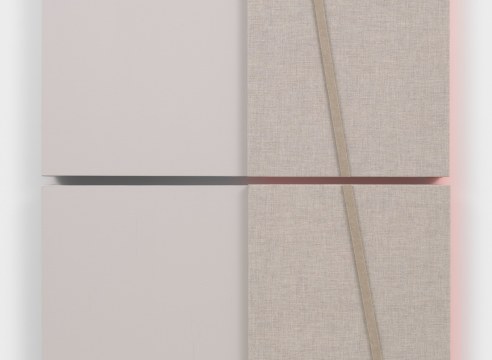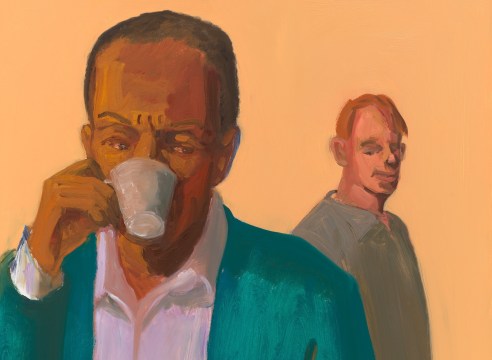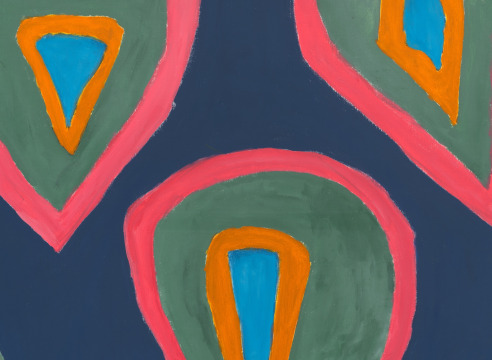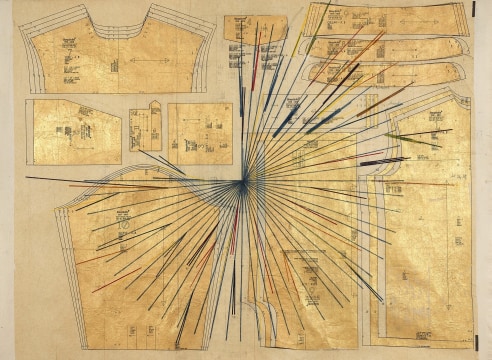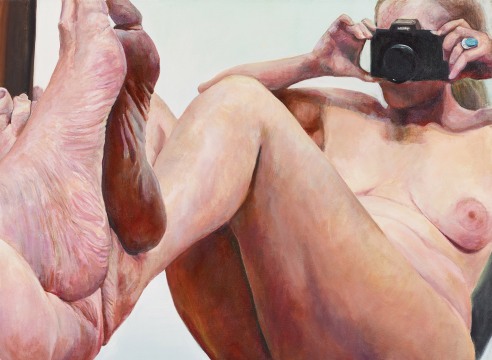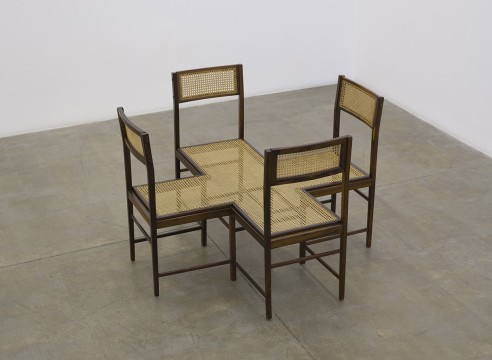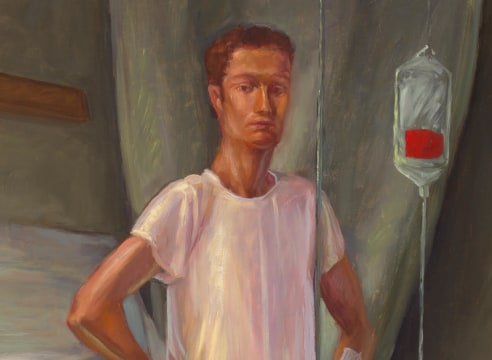
Frieze Los Angeles 2022 | 9900 Wilshire Boulevard | Los Angeles | February 17 – 20, 2022 | Booth D10
For Frieze Los Angeles 2022, Alexander Gray Associates presented paintings by pioneering feminist artist Joan Semmel alongside works by Melvin Edwards, Sam Gilliam, Jennie C. Jones, Betty Parsons, Valeska Soares, and Hugh Steers, as well as new Gallery artists Steve Locke and Ronny Quevedo. Including historic works by key figures of the twentieth century alongside recent work from established artists with critical contemporary perspectives, the Gallery’s presentation highlighted a diversity of approaches to questioning and expanding the art historical canon.
The Gallery’s booth was anchored by two paintings emblematic of Joan Semmel’s decades-long investigation of the possibility for female autonomy through the body, presented concurrently with her first retrospective Joan Semmel: Skin in the Game, on view at the Pennsylvania Academy of the Fine Arts in Philadelphia, PA, through April 3, 2022. Spaced Out (2019) belongs to a recent group of paintings defined by Semmel's perspective of looking down at her body, continuing an interest born out of the feminist activism of the 1970s to challenge contemporary discomfort with “imperfect” and aging women’s bodies. Combining gestural brushwork and expressive color—both stemming from her roots in Abstract Expressionism—Semmel's viewer becomes absorbed within her line of vision, shifting perspective toward both the physical form and the artist's inner life. With Violet Ground (2004), a characteristic example of Semmel’s use of the camera as it relates to both her process and subject matter, the artist purposefully poses in front of the mirror with the camera visible. As she explains, “While my work developed through series, the connecting thread across decades is a single perspective: being inside the experience of femaleness and taking possession of it culturally. I have used both the mirror and the camera as strategies to destabilize the point of view (who is looking at whom), and to engage the viewer as a participant.”
Continuing this mode of blurring boundaries between representation and content, the minimalist paintings of Jennie C. Jones incorporate noise-absorbing materials into their compositions. In Red Tone #5 (2021), Jones constructs a monochrome in two tones of bright red—an embellishment much like the trill of a grace note. The artist contends that the labor of creating such an evenly saturated surface is actually a “maximalist process” challenging the connection between minimalism and the reductive, a line of questioning further explored in her one-person exhibition Jennie C. Jones: Dynamics, on view at the Solomon R. Guggenheim Museum in New York, NY, through May 2, 2022. Jones’s contemporary interest in the objecthood of painting is anteceded in a historic work by Sam Gilliam, a revolutionary figure in postwar American abstraction. Gilliam’s Sun Melody (1965) evidences the artist’s gradual shift away from the strict parameters of Color Field painting and towards a sustained interest in the connection between painting and sculpture, paving the way for later series including his Beveled-Edge and Drape Paintings. Steve Locke’s Homage to the Auction Block series (2019–present) interrogates another aspect of modernist doctrine by re-envisioning Josef Albers’s Homage to the Square series (1950–1976) with an ominous charge. Homage to the Auction Block #113-venue (2021) abstracts a slave auction block to its most basic geometric silhouette, queering the pure formalism and color theory of Albers and unpicking the intertwined histories of race and modernism.
Locke continues his critical engagement with the Western canon through works such as Cruisers #1 (2021), examining how meaning is ascribed to portraiture and the privilege of looking and being seen. Locke’s ongoing series Cruisers series (2021–present) refers to a gay subculture of seeking sex with strangers in public places, capturing intimate moments between gay men that are simultaneously private and public. Echoing Locke’s interest in how men desire and relate to each other, Hugh Steers used his personal experience and imagination to construct dream-like scenes that brought needed public attention to the urgency of the AIDS epidemic. In an untitled work from 1986, Steers invokes the prevailing emotions of the queer experience during the AIDS crisis—of irredeemable brokenness—forced to navigate marginalized personal and communal identities in the face of an incurable disease.
Incorporating found materials rife with layered historical and cultural meanings, sculptures by Melvin Edwards reflect his engagement with the history of race, labor, and violence. Continue the Dialogue (1998), which features a steel chain welded to a vertical pipe, capitalizes on the conceptual implications of chain by recalling the physical bondage of slavery while also honoring Edwards’s African blacksmith forebears and symbolizing the continuation of tradition. Ronny Quevedo’s practice examines the historical and personal resonances generated by juxtaposing “precious” materials with those traditionally associated with undervalued labors and crafts, coupling materiality with a unique mode of abstraction that draws from the world of sports and pre-Columbian cultural heritage. His work luna descansa (2021), created by laboriously applying wax and silver leaf to dressmaking muslin mounted on a panel, is a deceptively elegant work simultaneously evocative of a starry night sky and a basketball court.
Similarly interested in the complexities of history, memory, and place, Valeska Soares’s practice utilizes tools of minimalism and conceptualism to mine territories of love and loss. Soares’s Palimpsest (I) (2016) alludes to histories that are obscured and sometimes forgotten by recontextualizing a series of vintage wooden boxes with individual landscape designs, aligning each decorative box to create a mysterious nightscape with a new common horizon line. Betty Parsons, who deviated from her training as a traditional landscape painter to embrace abstraction in 1947, one year after founding her eponymous gallery, developed a painterly approach to evoking memory in her place-infused abstractions. Parsons’s Maine 2 (1957), a fully abstract vision of a landscape deeply familiar to the artist, combines green and blue against a gray ground, possibly as reference to the forest and sea meeting the coastline, or as a purely expressive rendering of Parsons’s sensory perceptions.
Reflecting the Gallery’s engagement with artists active across cultural, social, and political spheres, the presentation for Frieze Los Angeles 2022 represents a range of artists’ perspectives and practices bound by a common interest in questioning formal and conceptual conventions.






















